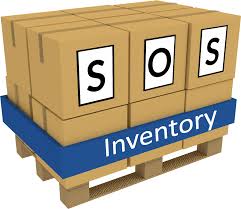The Top 10 Best Process Manufacturing Software Solutions: 2024 Edition
Process manufacturing is a method of production that involves combining and processing raw materials or ingredients through a series of steps to create a finished product. Unlike discrete manufacturing, which produces distinct items (like cars, sports equipment, or electronics), process manufacturing produces goods in bulk that cannot be easily separated into individual units.
Process manufacturing ERP software is a specialized type of ERP system designed to support the unique requirements of businesses in process manufacturing industries. These industries include food and beverages, chemicals, pharmaceuticals, and cosmetics, where the production processes involve continuous or batch processing, complex recipes or formulas, and stringent regulatory compliance requirements.
Implementing manufacturing process management software in your manufacturing operation can provide numerous benefits that address common challenges and drive growth. Here are several reasons why your business can benefit from manufacturing process optimization software:
- Improved Efficiency and Productivity. Process optimization software automates various production processes, reducing manual effort and the risk of errors, and provides real-time visibility into production operations, allowing for quick adjustments and proactive problem-solving.
- Enhanced Product Quality. Quality control checks throughout the production process ensures product consistency and helps with industry standards and regulatory requirements—crucial for maintaining quality and avoiding legal issues
- Better Inventory Management. Process manufacturing software monitors inventory levels to prevent stockouts and overstock situations, reducing holding costs and improving cash flow. Automated reordering sets reorder points and automates the procurement process to ensure materials are available when needed.
- Cost Reduction. Process manufacturing ERP software lets you track production costs, including materials, labor, and overhead, helping identify areas for cost savings. It also optimizes resource usage and reduces waste through precise formula management and efficient production scheduling.
- Data-Driven Insights. Manufacturing process management software provides comprehensive reporting and analytics on various aspects of the business, enabling informed decision-making while tracking key performance indicators (KPIs) to measure efficiency, productivity, and profitability.
- Scalability and Growth Support. Adapts to the changing needs of your business, supporting growth and new product lines without significant changes to the system and adjusts production schedules and processes easily to accommodate increased demand or new market opportunities.
- Regulatory Compliance. Automates the generation of necessary documentation and reports to comply with industry regulations, reducing the risk of non-compliance and can even track batch and lot numbers from raw materials to finished products, ensuring full traceability for quality control and regulatory purposes.
- Improved Collaboration and Communication. Data and documentation are centralized, making it easily accessible to all relevant departments. Manufacturing process management software can improve relationships with suppliers and customers, facilitating better communication and service.
- Risk Mitigation. Helps to identify potential risks in the production process and provides tools to mitigate them proactively, which ensures that production can continue smoothly even when issues arise, minimizing downtime and disruptions.
For an SMB manufacturing business, implementing process manufacturing ERP software can be a game-changer.
For a lot of growing businesses, it’s not always easy to find the right process manufacturing ERP software. With so many choices out there, it can be hard to know which process optimization software really fits the unique needs of your industry, your business, and your budget.
Don’t worry, there’s good news—finding the right process manufacturing software for your business has never been easier.
We’re here to help. Our software experts have compiled a comprehensive breakdown of The Top 15 Best Process Manufacturing Software Solutions for 2024.
*Note: Our manufacturing process optimization software reviews are for informational purposes only. We encourage you to perform research and demo process manufacturing ERP software systems to achieve the most comprehensive comparison.
1. Striven
Striven is an all-in-one ERP business management software solution built with small to mid-market businesses in mind, including those involved in process manufacturing. Our sophisticated software combines project management tools, CRM, sales performance metrics, lead management, collaboration tools, accounting, purchasing, HR and payroll, operations, inventory, task management tools, (and so much more) into a single, easy-to-use interface. Striven is an infinitely capable software solution that supports every type of employee within your company.
Highlights:
- Project, task, and time management w/ interactive calendar
- Detailed financial and productivity reports generated in seconds
- Fully integrated CRM
- Contractor and subcontractor management
- Self-service portals for vendors, clients, and applicants
- Scheduling & dispatch route planning
- Fully integrated accounting
- Process optimization & automation
What Sets It Apart: Striven’s expert team of business analysts personally see to your success. From training and onboarding, technical support, and business-specific customizations, our US-based Striven Support Team is available 24/7. On top of that, Striven’s automation capabilities allow you to work more efficiently.
Pricing: Free trial and custom demo, packages begin at $35/user.
More info: Striven Earns Numerous Awards For Q4 2023
2. Epicor

Epicor Advanced MES collects data directly from equipment and operators on the shop floor in real-time, maximizing data accuracy and process automation.
Highlights:
- Improve efficiency
- Reduce waste
- Improve quality
- Increase uptime
What Sets It Apart: You can automatically capture data from machines and sensors on the shop floor. Find out in real-time when a machine is not running efficiently so you can make quick adjustments and improvements.
Pricing: Must contact Epicor.
3. Syspro

SYSPRO Enterprise Resource Management (ERP) helps provide process manufacturers the right mix of business software applications to help you address these unique challenges, whether you’re making products in batch or configure-to-order mode.
Highlights:
- Manage complex production recipes
- Simplify regulatory compliance and raw material traceability
- Improve forecast accuracy
What Sets It Apart: SYSPRO’s Work in Progress inspection system gives you the tools to record the inspection details of manufactured products and, depending on the results, select to receipt, scrap or rework quantities.
Pricing: Contact Syspro for pricing.
4. Siemens

SIEMENS Opcenter Execution Process is a manufacturing execution system (MES) designed to ensure the perfect quality required of process-manufactured products.
Highlights:
- Manage materials, formula, recipe and batch management
- Perform integrated quality sampling and testing
- Process optimization software
What Sets It Apart: Siemens helps manufacturers meet both the special requirements of formulated product operations and the demands of secondary manufacturing operations, like packaging, labeling and palletizing finished goods.
Pricing: Contact Siemens for pricing plans.
5. Batchmaster

Batchmaster ERP production scheduling software creates the optimal number of batch jobs required to meet current and forecasted demand, so that you can meet your customer service promises, in terms of perfect orders and delivery dates.
Highlights:
- Consolidate supply and demand of facilities
- Perform “what-if analysis” while planning production
- Auto conversion of MPS orders to purchase orders and batch production jobs
What Sets It Apart: BatchMaster Software is a preconfigured “Out of the Box” application that supports the unique requirements of formula based, process manufacturers.
Pricing: Available upon request from Batchmaster.
6. SOS Inventory

Process manufacturing management in SOS Inventory supports an unlimited number of inputs and outputs, offering complete flexibility to handle not only simple manufacturing but also cope with co-products and by-products.
Highlights:
- Integrate with QuickBooks Online to eliminate duplicate data entry
- Use sales orders to streamline your order management
- Support multiple locations
What Sets It Apart: SOS Inventory’s most compelling feature is its tight integration with QuickBooks Online. Quickbooks Online is not an afterthought for us. Our software is built specifically for QuickBooks Online from the ground up.
Pricing: Starts at $59.95/month.
Read More: If you’re outgrowing Quickbooks, you need to read this
7. MRPeasy

With MRPeasy process manufacturing ERP, easily calculate material requirements, comply with traceability and quality standards, eliminate waste, and reduce holding costs.
Highlights:
- Always know what you have in stock
- Automatically calculate material requirements for incoming orders
- Schedule production activities according to resource availability
- Plan your purchases so that materials always arrive in time for production
- Track your orders from quote to delivery
What Sets It Apart: Use the plethora of reports created by the software to drive positive change across the operation.
Pricing: Plans begin at $49/month.
8. Acctivate

Acctivate’s software for process manufacturing supports both recipe and formula process manufacturing allowing for components to be adjusted based on seasonal requirements, availability, or the requirement for substitutions.
Highlights:
- Handle variations in input recipe to allow for substitute items and changes in quantities
- Variable recipe and variable yield capabilities
- Account for spillage and waste
- Substitute ingredients in recipes
- Handle multiple lots of the same ingredients
What Sets It Apart: Utilize your company’s live data in various ways via Acctivate, i.e., in standard/custom reports, customizable dashboard, and all the application windows to seamlessly handle operations.
Pricing: Contact Acctivate for pricing details.
Read More:
9. Aptean

With Aptean Process Manufacturing ERP, upgrade your operations with a full ecosystem of process manufacturing software from one trusted provider. Improve formula management, lot tracking, regulatory compliance and more with a full set of specialized tools.
Highlights:
- Streamline new product development
- Manage product risk
- Enforce regulatory compliance
What Sets It Apart: Industry segments served: Cannabis, Chemical, Cosmetics & Personal Care, Nutraceutical.
Pricing: Contact Aptean for pricing plans.
10. Absolute ERP

Absolute manufacturing process optimization software offers the best Production Management that allows you to balance daily schedules timely in a systematic manner. It also helps to promote centralized database support and assists to optimize each resource related to management.
Highlights:
- Cloud-based solution
- Unlimited users
- Device responsive. Get the Absolute ERP access on any device
What Sets It Apart: Production accounting software helps to access business data from their mobile phone, tablet, computer, or laptop anywhere at any time. Production system software allows employees to access documents easily for editing and approval on the go.
Pricing: Contact for pricing.
Contact an Process Manufacturing Software Expert
Over the years, our software support team has been instrumental in helping business owners and their employees get up to speed quickly. The small business analyst team at Striven boasts decades of experience across various industries, including process manufacturing software.
It’s your business, and you’re the expert—our team is here to support you in every way possible.
Have a question?






